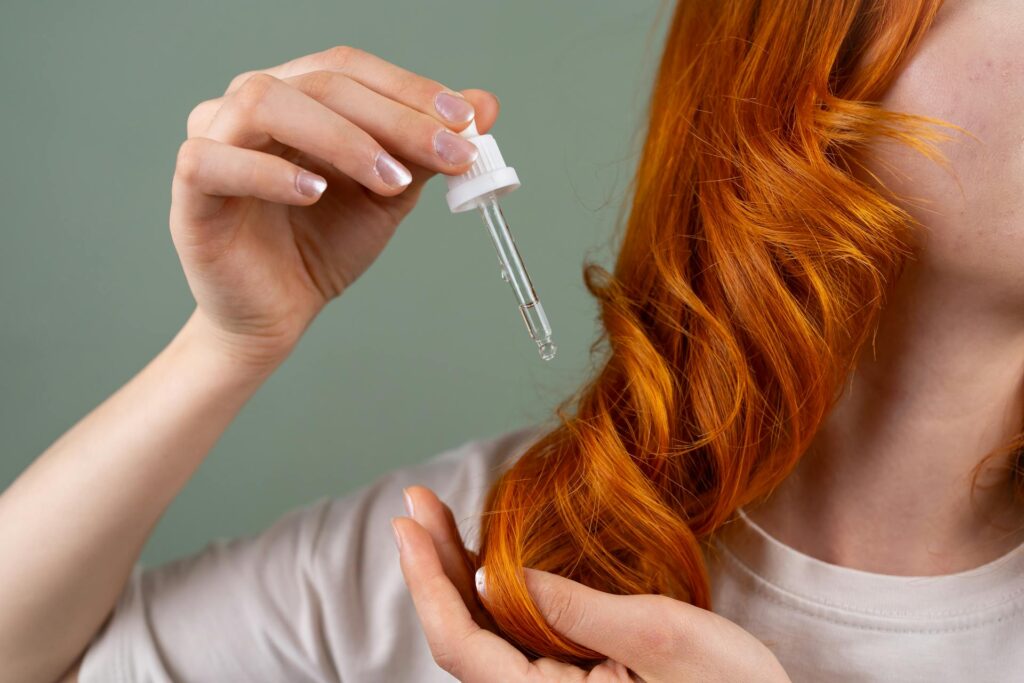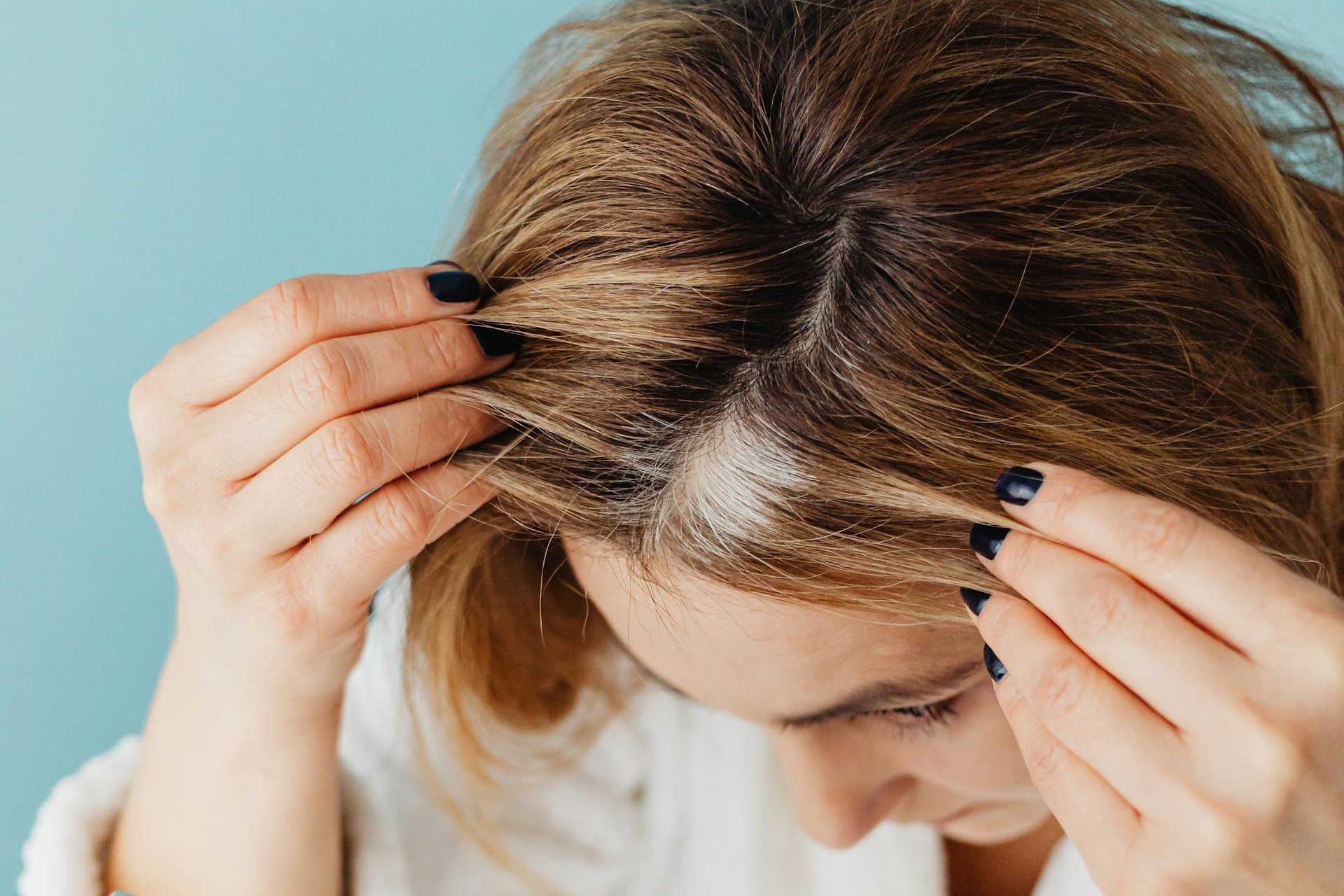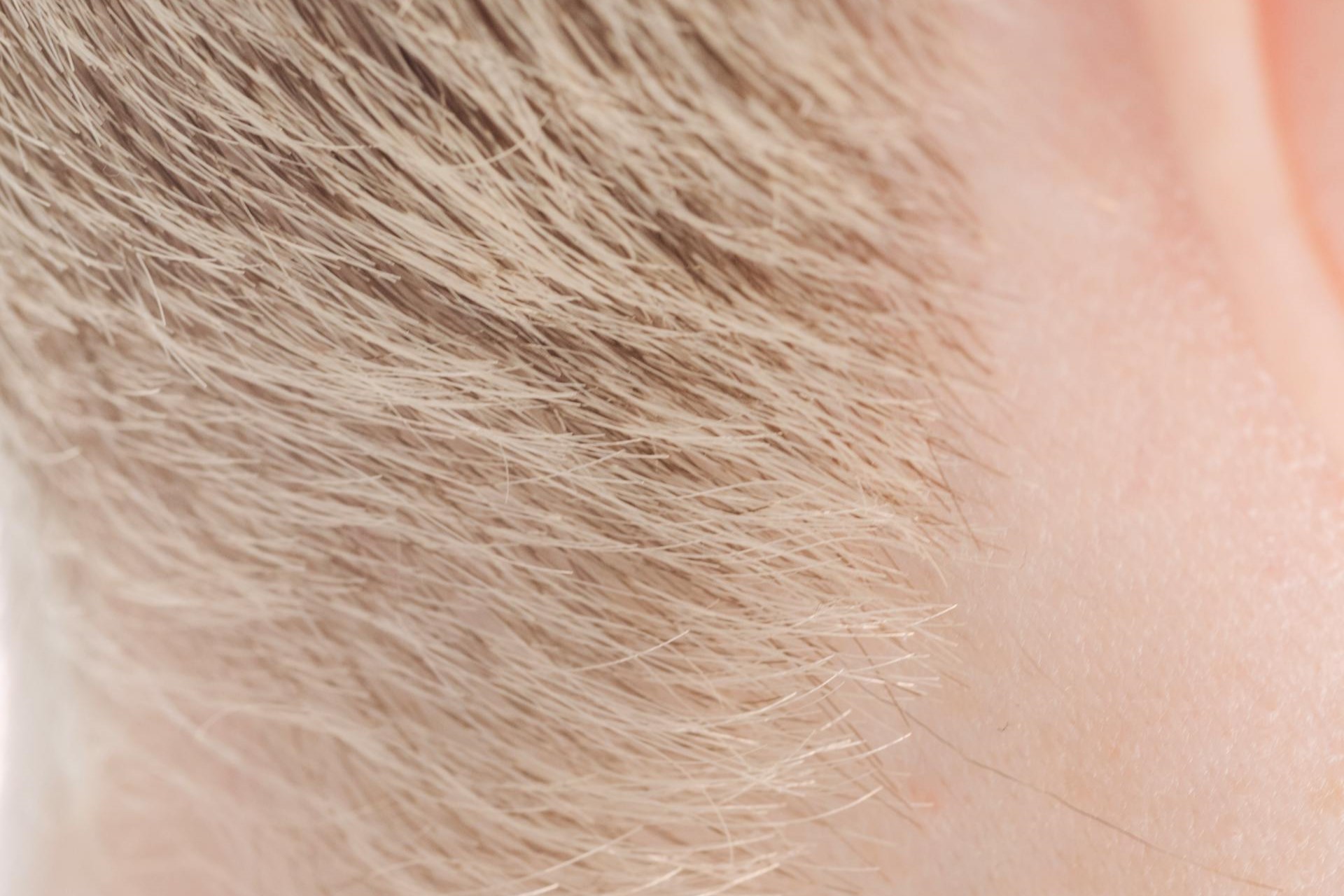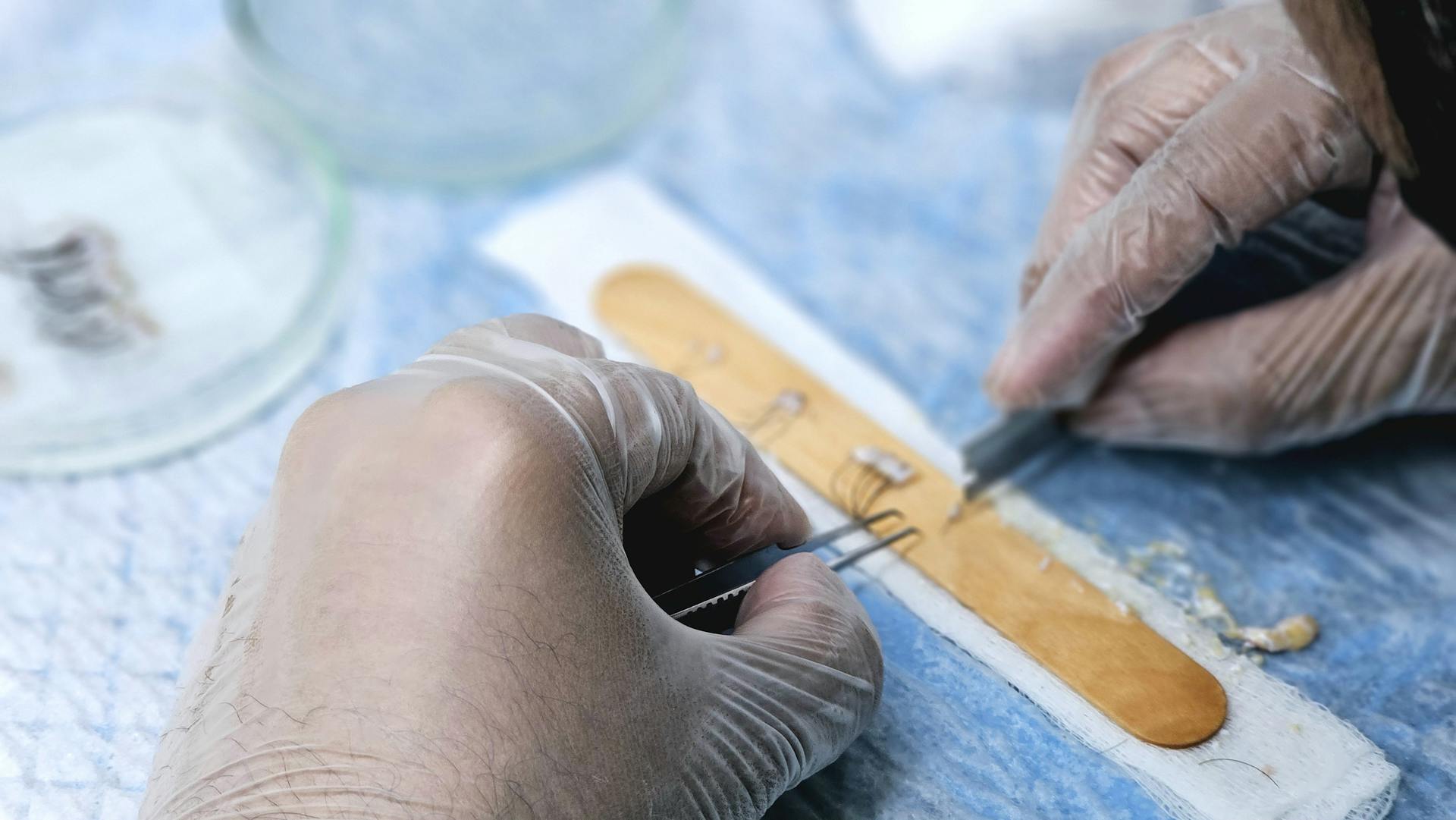
Hair loss can be a deeply distressing experience for many individuals, often leading them to seek effective solutions. In recent years, hair restoration therapy has gained popularity as a viable option for addressing thinning hair and restoring confidence.
Losing one’s hair can feel like a silent battle, gradually chipping away at confidence and self-image. However, the future of hair restoration is brighter than ever, thanks to groundbreaking advancements in science and technology that have transformed the field from a distant dream into a tangible reality.
Modern hair restoration therapies are nothing short of medical marvels, blending cutting-edge biotechnology with the body’s own regenerative capabilities. Imagine harnessing the healing potential of your own blood through Platelet-Rich Plasma (PRP) therapy, where concentrated growth factors awaken dormant hair follicles, or leveraging stem cell technologies poised to regenerate hair at the cellular level.
These aren’t science fiction scenarios, but real, scientifically-validated treatments that are offering hope to millions struggling with hair loss. From microRNA interventions that soften aging hair follicles to low-level laser therapies that stimulate blood flow and cellular repair, today’s hair restoration techniques represent a perfect fusion of medical innovation and biological understanding.
Whether you’re experiencing genetic baldness, age-related thinning, or stress-induced hair loss, the modern arsenal of hair restoration therapies offers personalised, sophisticated solutions that go far beyond traditional approaches.
This article will explore the science behind hair restoration therapy, various types of hair restoration techniques available, discussing their effectiveness, potential risks, and what one can expect during the process. Additionally, it will cover natural alternatives, the hair growth cycle, and offer tips for selecting the right provider.
Join us as we delve into the science and benefits associated with hair restoration therapy.
What is Hair Restoration Therapy?

Hair restoration therapy includes a range of advanced techniques and treatments designed to tackle hair loss and promote hair regrowth. This innovative field merges dermatology and aesthetic medicine to offer solutions for individuals experiencing hair thinning and loss, especially due to conditions like androgenetic alopecia and other dermatological issues.
The options available range from non-surgical approaches, such as low-level laser therapy and platelet-rich plasma (PRP) treatments, to surgical procedures like hair transplants.
With an increasing number of clinical studies showcasing their effectiveness and positive patient outcomes, it is essential for anyone looking to enhance their hair health and density to understand this complex area.
How Does Hair Restoration Therapy Work?
Hair restoration therapy utilises a range of techniques designed to stimulate hair follicles, improve blood circulation, and promote cellular regeneration in the scalp.
The core principle of this therapy is to address hormonal imbalances, particularly the effects of DHT (dihydrotestosterone), which is a significant factor in hair loss.
By employing advanced methods such as micro-needling, topical treatments, and CE-marked devices, practitioners can activate the hair growth cycles, especially the anagen phase, which leads to thicker and healthier hair regrowth.
Furthermore, customised treatment plans often include nutritional supplements, such as biotin and keratin, to enhance overall hair health.
What Are The Different Types of Hair Restoration Therapy?
There are a variety of hair restoration therapies available, ranging from non-surgical methods to more invasive procedures, all designed to meet the unique needs of each patient. The cost of hair restoration can vary significantly depending on the type of treatment chosen, making it crucial for individuals to weigh their options carefully.
Non-surgical methods typically involve minimal downtime, allowing individuals to continue their daily activities without major interruptions. These approaches often come with reduced risks and lower costs compared to surgical alternatives. Conversely, surgical procedures such as Follicular Unit Extraction (FUE) and Follicular Unit Transplantation (FUT) may offer long-term solutions but often involve higher costs, longer recovery times, and potential complications.
It is essential for individuals to seek guidance from hair restoration specialists who can provide personalised care plans. These specialists consider not only the effectiveness of each treatment but also adopt a holistic approach that takes into account the patient’s budget, lifestyle, and overall wellness.
How Effective is Hair Restoration Therapy?

The effectiveness of hair restoration therapy can vary considerably due to several factors, including the specific treatment method used and the underlying cause of hair loss.
Clinical studies indicate that various therapies, such as minoxidil and finasteride, have demonstrated efficacy in promoting hair regrowth, especially in individuals with androgenetic alopecia.
However, the success of these treatments often hinges on patient education, adherence to prescribed protocols, and lifestyle factors that may affect hair health.
Furthermore, ongoing advancements in hair restoration technology are continually enhancing evidence-based treatment approaches, resulting in improved outcomes for patients.
What Factors Affect the Success of Hair Restoration Therapy?
Several factors can significantly impact the success of hair restoration therapy, including genetics, hormonal balance, and lifestyle choices. Genetics is a key player in determining one’s predisposition to hair loss conditions, such as androgenetic alopecia. Hormonal fluctuations, particularly those involving DHT, can further exacerbate hair thinning.
Additionally, external factors such as inflammation, nutritional deficiencies, and environmental influences can impede hair restoration efforts. Therefore, it is crucial to address these underlying conditions to optimise treatment outcomes.
Understanding how these elements interact is essential for anyone looking to improve their hair restoration journey. For example, adopting a balanced diet rich in essential nutrients can strengthen hair follicles and enhance scalp health.
It is also important to manage stress levels, as chronic stress can contribute to increased hair loss. Incorporating relaxation techniques and regular exercise can help alleviate the effects of stress.
Maintaining a healthy scalp environment is equally vital, which can be achieved through proper cleansing and using products designed to reduce inflammation. By skillfully navigating these factors, individuals can significantly enhance the effectiveness of their hair restoration therapies.
What Are the Risks and Side Effects of Hair Restoration Therapy?
While hair restoration therapy can yield promising results, it is important to be aware of the potential risks and side effects associated with different treatments.
These side effects may include scalp irritation, allergic reactions, or even temporary hair thinning following certain procedures. This highlights the need for careful monitoring and attentive care from experienced hair restoration specialists.
Understanding these risks is crucial for ensuring safe and effective outcomes, especially when cosmetic procedures may interact with underlying dermatological conditions.
Are There Any Natural Alternatives to Hair Restoration Therapy?
There are indeed several natural alternatives to conventional hair restoration therapies that individuals may explore to promote hair growth and enhance overall scalp health. Holistic approaches typically incorporate natural remedies such as essential oils, herbal supplements, and a well-balanced diet rich in biotin and keratin, which are known to stimulate hair growth.
Additionally, scalp exercises and techniques designed to improve blood circulation can support scalp health and potentially help prevent hair loss.
Lifestyle factors are also essential in maintaining vibrant hair. Practices focused on managing stress, engaging in regular exercise, and ensuring adequate sleep can significantly impact hair vitality.
Furthermore, it is important to consider the environmental effects of the hair products one uses. Choosing chemical-free shampoos and conditioners can reduce harmful exposure and promote the health of hair follicles.
Scientific research has demonstrated that certain ingredients, such as rosemary oil, can be as effective as some pharmaceutical treatments in promoting hair growth. This provides a compelling argument for the efficacy of natural alternatives.
By adopting these holistic practices, individuals may discover a multifaceted approach to hair restoration that aligns with their health and sustainability objectives.
What Are the Different Stages of Hair Growth?

Understanding the various stages of hair growth is essential for grasping how hair restoration therapy functions and when to administer different treatments.
Hair growth cycles consist of several phases, including the anagen phase, where active growth takes place, and the telogen phase, which signifies a resting period. It is important to note that each hair follicle cycles at different rates, which can influence overall hair density and health.
Recognising these cycles is vital for implementing effective hair restoration methods, as treatments can be tailored to target specific phases to achieve optimal results.
How Does Hair Growth Cycle Affect Hair Restoration Therapy?
The hair growth cycle plays a significant role in determining the outcomes of hair restoration therapy. By understanding the timing of each phase, specialists can tailor treatments for optimal results.
For example, therapies designed to stimulate hair follicles during the anagen phase often produce better results than those applied during the telogen phase. It is also essential to educate patients about hair follicle cycling and the importance of adhering consistently to treatment plans, as this can greatly influence the achievement of desired outcomes, as supported by clinical studies.
This relationship underscores the invaluable expertise that hair restoration specialists offer. They utilise their knowledge to create personalised care plans that align with each patient’s unique hair growth cycle.
By focusing on evidence-based treatment methodologies, these professionals can assess how individual patients respond to various therapies, ensuring that interventions are both effective and targeted.
Patients benefit greatly from this collaborative approach, which enhances their satisfaction and confidence throughout their hair restoration journey. An informed patient is more inclined to actively engage in their treatment process, leading to improved outcomes and a stronger sense of control over their hair health.
What Are the Causes of Hair Loss?
Hair loss can arise from a variety of factors, including genetics, hormonal imbalances, lifestyle choices, and environmental influences.
For instance, conditions like androgenetic alopecia are largely influenced by genetic predisposition. Hormonal fluctuations, especially those related to DHT, can hasten hair thinning in both men and women.
Additionally, stress, insufficient nutrition, and exposure to harsh environmental conditions can worsen hair loss issues and make restoration efforts more challenging.
Can Hair Restoration Therapy Help with All Types of Hair Loss?
Hair restoration therapy has demonstrated varying levels of effectiveness for different forms of hair loss, with certain treatments proving more beneficial for specific conditions. For instance, therapies such as minoxidil and finasteride are frequently recommended for androgenetic alopecia, while alternative treatments may be more appropriate for hair loss resulting from stress, inflammation, or nutritional deficiencies.
Clinical studies and patient outcomes suggest that personalised treatment plans can significantly improve the chances of successful hair regrowth across a range of hair loss types.
This variability underscores the importance of an individualised assessment by hair restoration specialists, who are equipped to evaluate the underlying causes of hair loss that are unique to each patient. Through comprehensive evaluations, including scalp analysis and thorough reviews of medical history, these professionals can develop tailored interventions that effectively address specific needs.
Research indicates that customised treatment regimens not only optimise outcomes but also enhance overall patient care. By concentrating on the distinct characteristics of each condition, specialists can assist individuals in achieving their desired results, ultimately fostering greater confidence and satisfaction throughout their hair restoration journey.
What Are the Benefits of Hair Restoration Therapy?

Hair restoration therapy provides numerous benefits, including improved hair density and enhanced self-esteem, along with a boost in psychological well-being.
Those who pursue hair restoration frequently find themselves experiencing a renewed sense of confidence and satisfaction as they witness notable regrowth and overall enhancements in their hair health.
Beyond the aesthetic improvements, the positive outcomes reported by patients undergoing effective therapy also play a significant role in enhancing mental health.
Thus, the advantages of hair restoration therapy extend well beyond the physical, encompassing important psychological benefits as well.
Can Hair Restoration Therapy Help with Thinning Hair?
Hair restoration therapy can effectively address issues related to thinning hair, offering solutions that stimulate hair growth and promote density. By utilising these therapies, individuals can take a proactive approach to managing their hair health.
For instance, PRP therapy uses the patient’s own platelet-rich plasma to rejuvenate hair follicles through growth factors. Meanwhile, low-level laser therapy employs specific wavelengths of light to enhance cellular function, improving blood circulation and nutrient delivery to the scalp.
Customised topical solutions often include minoxidil or natural extracts, specifically designed to nourish and energise hair follicles directly.
Early intervention with these treatments not only maximises potential results but also enables patients with the knowledge needed to make informed choices about their hair restoration journey. This underscores the critical importance of seeking therapy at the onset of thinning.
Does Hair Restoration Therapy Have Any Long-Term Effects?
Many patients often find themselves curious about the long-term effects of hair restoration therapy, especially regarding maintenance and the sustainability of results. Research suggests that while numerous therapies can lead to lasting outcomes, consistent maintenance is necessary to preserve the hair growth achieved through various treatments.
The psychological benefits of having restored hair density frequently translate into improved self-confidence and an enhanced overall quality of life, underscoring the lasting advantages of effective hair restoration methods.
For those undergoing these therapies, maintaining a connection with hair restoration specialists is essential. These experts can offer personalised guidance and conduct regular assessments to ensure the best outcomes. This ongoing relationship not only deepens the understanding of individual needs but also reinforces the commitment to maintenance routines.
It is important to recognise the significant role that patient engagement plays; by actively participating in their hair care journey, individuals are more likely to achieve positive results.
As patients witness the gradual transformation in their appearance, the added support and motivation from professionals can greatly enhance their overall well-being and satisfaction with the outcomes.
How Long Does it Take to See Results from Hair Restoration Therapy?
The timeline for observing results from hair restoration therapy can differ significantly based on the treatment method used and individual hair growth cycles.
Typically, patients may start to notice initial signs of regrowth within a few months. However, more substantial changes in hair density and overall health may take anywhere from six months to a year or even longer.
It is important to set realistic expectations for patients, as factors such as adherence to treatment regimens and personal responses can greatly impact the outcomes.
What Are the Maintenance Requirements for Hair Restoration Therapy?
Maintenance plays a vital role in hair restoration therapy, as it helps patients enjoy the long-term benefits of their treatments.
This ongoing care is not limited to simply attending scheduled appointments; it requires a comprehensive approach that includes regular evaluations of scalp health and the effectiveness of the prescribed treatments. It is important for patients to feel encouraged to share any concerns they may have, as this feedback is essential for tailoring their therapy.
Additionally, incorporating holistic practices—such as scalp massages, nutrition-focused diet plans, and natural hair growth products—can further enhance the overall results.
By actively participating in these recommended maintenance practices, individuals not only preserve the improvements they have achieved but also foster a healthier environment that supports continued hair growth.
What Are Some Tips for Choosing a Hair Restoration Therapy Provider?

Selecting an appropriate hair restoration therapy provider is a crucial step towards achieving effective treatment and favourable outcomes. Those considering such procedures should look for providers who specialise in hair restoration, as this ensures both expert consultation and a strong understanding of the latest advancements in the field.
Additionally, it is wise to take into account the provider’s track record, patient testimonials, and any clinical trials they may have been involved in. This information can help assess their effectiveness and reputation within the industry.
Frequently Asked Questions
What is the science behind hair restoration therapy?
Hair restoration therapy is based on the science of stem cells and their ability to regenerate and repair damaged tissues, including hair follicles. Stem cells are extracted from the patient’s own body and injected into the scalp, where they stimulate the growth of new hair follicles.
How does hair restoration therapy work to regrow hair?
Hair restoration therapy works by stimulating the dormant hair follicles to enter the active growth phase. The injected stem cells release growth factors and other proteins that promote blood flow and nourishment to the hair follicles, resulting in new hair growth.
Is hair restoration therapy effective for everyone?
While hair restoration therapy has shown promising results for many individuals, the effectiveness may vary depending on the severity of hair loss and underlying causes. It is recommended to consult with a hair restoration specialist to determine if this treatment is the best option for you.
Are there any side effects of hair restoration therapy?
Since hair restoration therapy uses the patient’s own cells, the risk of side effects is minimal. Some patients may experience minor redness or swelling at the injection site, which typically subsides within a few days. It is important to follow post-treatment instructions provided by the specialist to minimise any potential side effects.
How long does it take to see results from hair restoration therapy?
The timeline for seeing results from hair restoration therapy may vary from person to person. Some patients may start to see new hair growth within a few months, while others may take up to a year. It is important to be patient and follow the recommended treatment plan for optimal results.
Is hair restoration therapy a permanent solution for hair loss?
Hair restoration therapy can provide long-lasting results, but it is not a guaranteed permanent solution. It can slow down or even stop hair loss, but the success of the treatment also depends on maintaining a healthy lifestyle and following post-treatment care instructions. Additional sessions may also be needed for maintenance over time.





